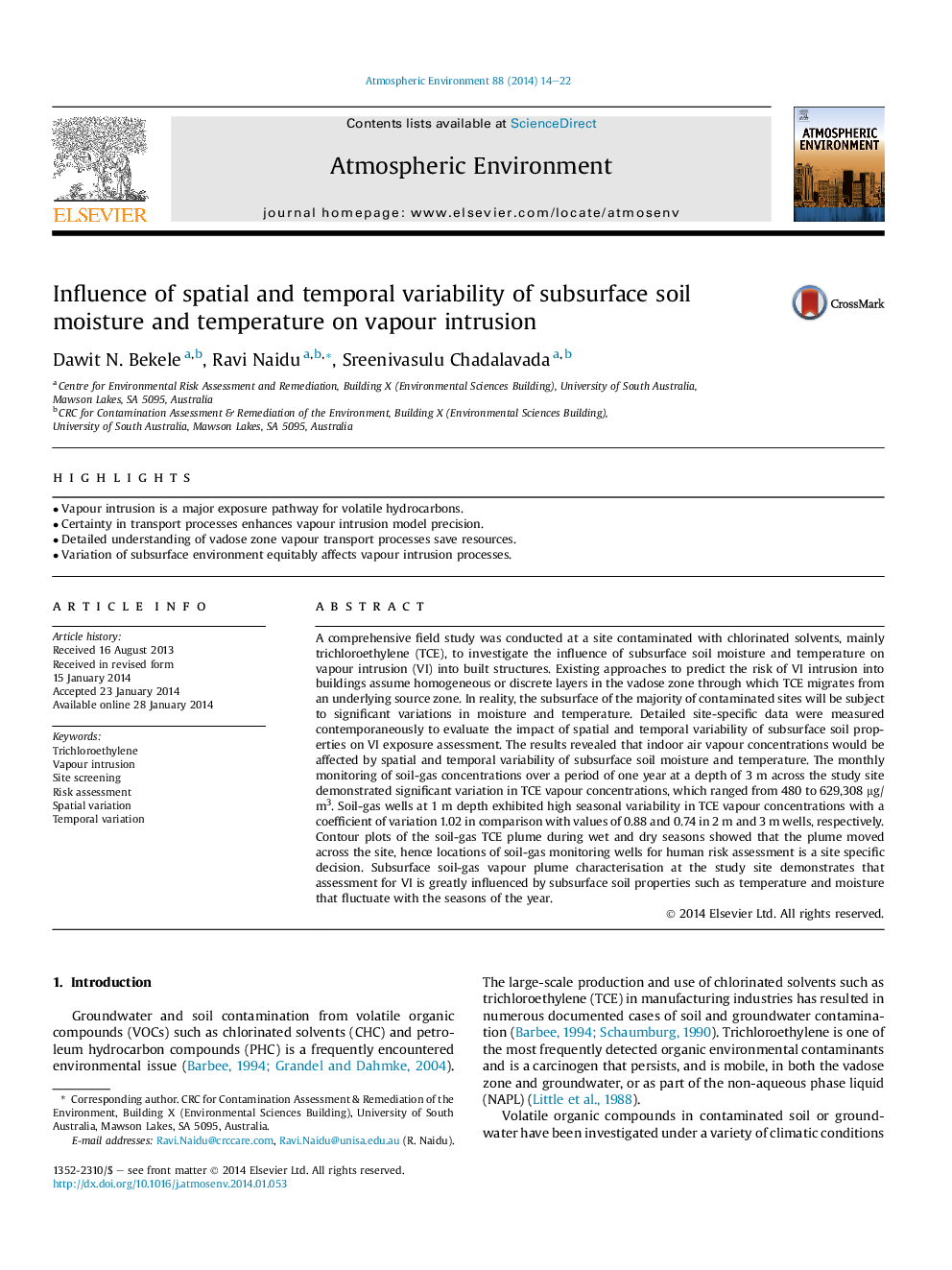| Article ID | Journal | Published Year | Pages | File Type |
|---|---|---|---|---|
| 6340831 | Atmospheric Environment | 2014 | 9 Pages |
Abstract
A comprehensive field study was conducted at a site contaminated with chlorinated solvents, mainly trichloroethylene (TCE), to investigate the influence of subsurface soil moisture and temperature on vapour intrusion (VI) into built structures. Existing approaches to predict the risk of VI intrusion into buildings assume homogeneous or discrete layers in the vadose zone through which TCE migrates from an underlying source zone. In reality, the subsurface of the majority of contaminated sites will be subject to significant variations in moisture and temperature. Detailed site-specific data were measured contemporaneously to evaluate the impact of spatial and temporal variability of subsurface soil properties on VI exposure assessment. The results revealed that indoor air vapour concentrations would be affected by spatial and temporal variability of subsurface soil moisture and temperature. The monthly monitoring of soil-gas concentrations over a period of one year at a depth of 3 m across the study site demonstrated significant variation in TCE vapour concentrations, which ranged from 480 to 629,308 μg/m3. Soil-gas wells at 1 m depth exhibited high seasonal variability in TCE vapour concentrations with a coefficient of variation 1.02 in comparison with values of 0.88 and 0.74 in 2 m and 3 m wells, respectively. Contour plots of the soil-gas TCE plume during wet and dry seasons showed that the plume moved across the site, hence locations of soil-gas monitoring wells for human risk assessment is a site specific decision. Subsurface soil-gas vapour plume characterisation at the study site demonstrates that assessment for VI is greatly influenced by subsurface soil properties such as temperature and moisture that fluctuate with the seasons of the year.
Related Topics
Physical Sciences and Engineering
Earth and Planetary Sciences
Atmospheric Science
Authors
Dawit N. Bekele, Ravi Naidu, Sreenivasulu Chadalavada,
